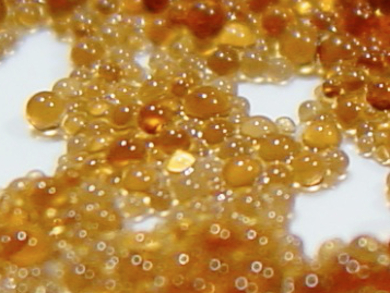Ion exchange materials are widely used for applications such as water softening and purification, ion exchange chromatography, and separating and purifying metal ions. Common exchangers are based on resins (organic polymers, pictured) or zeolites (porous aluminosilicates). Newer developments include the use of metal-organic frameworks (MOFs). However, all these approaches can have drawbacks such as swelling, low exchange capacities, or insufficient chemical stability.
Zhan Shi, Jilin University, Changchun, China, Shengqian Ma, University of South Florida, Tampa, FL, USA, and colleagues have developed ion exchange materials based on functionalized porous organic polymers (POPs). The team used PAF-1 (porous aromatic framework), a diamond-like framework in which the C–C bonds are replaced with rigid phenyl rings, as its model POP. They turned it into an anion exchanger by functionalizing it with trimethylammonium chloride units, which were then converted to trimethylammonium hydroxide via ion exchange.
The resulting material showed rapid ion exchange, high capacity, and very good chemical stability compared to conventional ion exchangers, while swelling was avoided due to its rigid framework. In addition to these advantages, the researchers suggest that the POP-based exchangers can be designed to selectively capture ions.
- Creation of a New Type of Ion Exchange Material for Rapid, High-Capacity, Reversible and Selective Ion Exchange without Swelling and Entrainment,
Baiyan Li, Yiming Zhang, Dingxuan Ma, Zhenyu Xing, Tianliang Ma, Zhan Shi, Xiulei Ji, Shengqian Ma,
Chem. Sci. 2015.
DOI: 10.1039/C5SC04507J




